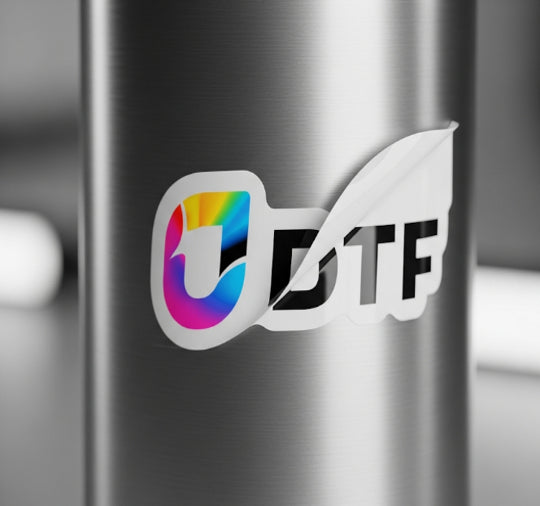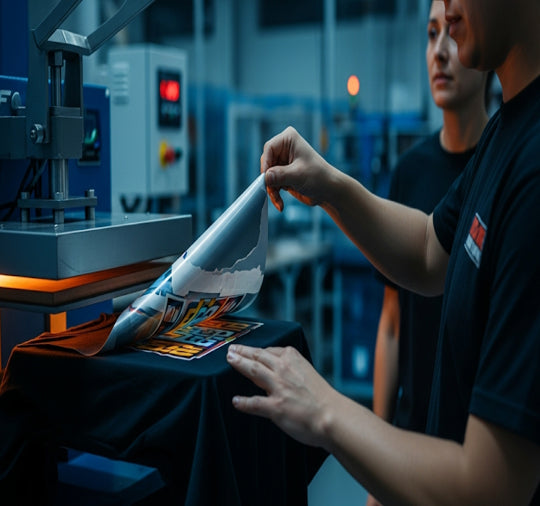In the ever-evolving landscape of textile printing, Direct to Film (DTF) transfer technology stands out as a revolutionary method, offering vibrant prints and versatile applications. As the textile industry continues to innovate, staying updated with emerging technologies is crucial, especially in the B2B wholesale market. These advancements not only foster growth but also open doors to new possibilities in DTF transfers wholesale.
Current State of DTF Transfer Technology
DTF transfer technology has quickly gained popularity due to its versatility, cost-effectiveness, and ability to produce high-quality prints on a wide range of fabrics. The process involves printing designs onto a special film, applying a powder adhesive, and then transferring the image onto the desired garment using heat. This method offers numerous advantages for wholesalers, including reduced setup times, lower production costs, and the ability to create vibrant, durable designs on both light and dark fabrics.
However, as with any technology, there is always room for improvement. Current DTF transfer processes, while effective, face certain limitations such as transfer speed, color accuracy, and long-term durability. These challenges have paved the way for innovative solutions that promise to elevate the DTF transfer wholesale industry to new heights.
Emerging Textile Technologies Relevant to the Wholesale Market
One of the most promising advancements in textile printing comes from the realm of nanotechnology. By manipulating materials at the molecular level, researchers are developing inks and transfer films with enhanced properties. These nano-enhanced materials offer improved color saturation, increased durability, and better adhesion to fabrics. For DTF transfers wholesale, this translates to higher quality products that can withstand more wash cycles and maintain their vibrancy over time.
Another exciting development is the integration of smart fabrics with DTF transfer technology. Smart textiles, embedded with sensors and conductive materials, open up a world of possibilities for interactive and functional apparel. As these technologies become more accessible, DTF transfers may soon find themselves at the forefront of producing customized smart clothing for various industries, from healthcare to sports and fitness.
The growing demand for sustainable and eco-friendly products has also influenced DTF transfers wholesale. Innovations in biodegradable transfer materials and eco-friendly inks are addressing environmental concerns while maintaining print quality. These advancements not only appeal to environmentally conscious consumers but also help wholesalers comply with increasingly stringent regulations on textile production and waste management.
The rise of 3D-printed textiles presents another intriguing avenue for DTF transfers. While still in its early stages, the potential integration of 3D-printed elements with DTF transfers could lead to unique textures and designs that were previously impossible to achieve. This fusion of technologies may open up new market segments and applications for DTF transfer products.
Impact on DTF Transfer Production Processes
Emerging technologies promise to enhance DTF transfer production processes significantly. Increased efficiency and speed in transfer applications can lead to higher output and reduced costs. Advances in materials and techniques improve the durability and wash-resistance of transfers, ensuring longevity. Additionally, enhanced color vibrancy and print quality can set new standards for visual appeal, while innovative application methods could introduce fresh possibilities for customization.
Effects on B2B Wholesale Market Dynamics
The introduction of these technologies is reshaping DTF transfers wholesale dynamics. Customer expectations are evolving, with a growing demand for innovative and personalized products. This shift presents opportunities for new product offerings and diversification, as well as potential market expansion and new B2B partnerships. However, these changes also impact pricing and competition, requiring wholesalers to adapt strategically.
Challenges And Opportunities for DTF Transfers Wholesale
Adopting new technologies comes with a set of challenges and opportunities. Wholesalers must consider the investment required for new equipment and processes, along with the training and skill development needed for their workforce. The potential for increased customization and personalization offers a competitive edge, but balancing innovation with reliability and consistency remains crucial.The impact of emerging textile technologies on DTF transfers is profound. These advancements offer exciting opportunities for growth and innovation in the B2B market. However, adaptability and continuous innovation are key to staying relevant and competitive. As the industry evolves, the future of DTF transfer wholesale looks promising, with technological advancements paving the way for new possibilities and market expansion.
Ready to revolutionize your DTF transfer wholesale business with cutting-edge technology? Visit our website today to explore our range of innovative DTF transfer solutions and take the first step towards future-proofing your operations. Don't let your competition get ahead – act now and secure your place at the forefront of the textile printing industry!

